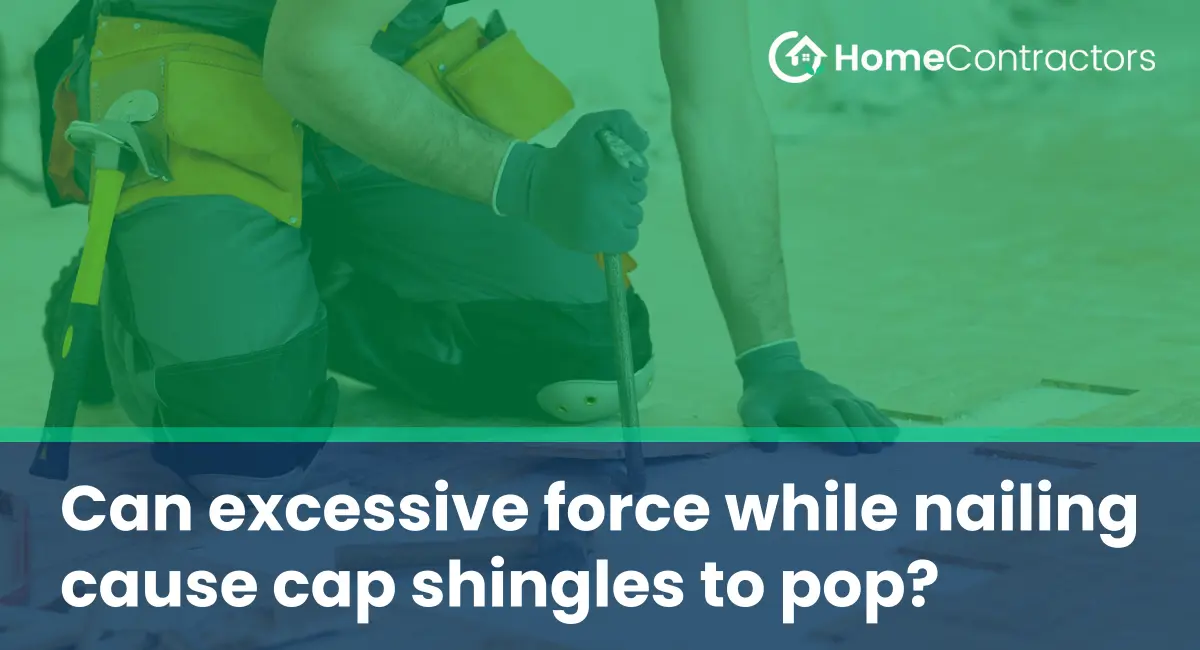When it comes to installing a roof, careful attention to detail is crucial to ensure its longevity and performance. One of the most important aspects of roof installation is the proper attachment of shingles, especially cap shingles. Cap shingles are essential in providing a finished look to the roof and protecting it from water infiltration. However, improper handling and excessive force while nailing can potentially lead to various issues, including the popping of cap shingles. In this article, we will delve into the significance of cap shingles, discuss the factors contributing to their popping, and offer mitigation strategies.
The Importance of Cap Shingles:
To understand the impact of excessive force while nailing on cap shingles, it is crucial to comprehend the significance and function of cap shingles in roofing systems. Cap shingles are generally installed at the peak or hip of a roof, creating a finished appearance while also reinforcing the vulnerable areas against water penetration. Their installation requires precision and care to ensure a tight fit and proper sealing, as any deficiencies might compromise the integrity of the entire roofing system.
Factors Contributing to Cap Shingle Popping:
1. Improper nailing technique:
One of the primary factors contributing to cap shingle popping is the use of excessive force or improper nailing technique. Hammering the nails too forcefully can cause the nails to penetrate through the shingle material, creating stress points that lead to the shingles popping or lifting. Similarly, improper angle or placement of nails can weaken the shingle’s holding power, making it more susceptible to popping.
2. Shingle material and quality:
The type and quality of shingle material also play a significant role in determining the likelihood of cap shingle popping. Shingles made of inferior material or those that are aged and brittle may not have enough flexibility to withstand excessive force during nailing. As a result, they are more prone to cracking or popping under pressure.
Mitigation Strategies:
1. Use proper nailing technique:
To avoid cap shingle popping, it is essential to employ the correct nailing technique. This includes using the appropriate amount of force during hammering without applying excessive pressure. Additionally, nails should be driven at the recommended angle and placement to ensure optimal grip and minimize stress on the shingles.
2. Select high-quality shingles:
Investing in high-quality shingles is not only beneficial for the overall durability of the roof but also helps mitigate the risk of cap shingle popping. Opt for shingles made of quality materials, preferably those with enhanced flexibility and resistance to stress. Consulting with a roofing professional or supplier can provide valuable insights into choosing the most suitable shingles for your specific climate and roofing needs.
3. Regular inspection and maintenance:
Regular inspection and maintenance of the roof are fundamental in identifying and addressing issues before they escalate. Conducting routine checks for any signs of popped or lifted cap shingles allows for early intervention, preventing further damage and water infiltration. Additionally, maintaining a clean and debris-free roof surface avoids unnecessary risks to the integrity of the shingle installation.
Excessive force while nailing can indeed cause cap shingles to pop, potentially compromising the performance and aesthetic appeal of the roof. Proper nailing technique, along with the selection of high-quality shingles and regular maintenance, are essential in mitigating the risk of cap shingle popping. By understanding the significance of cap shingles and implementing proper installation practices, homeowners and roofing professionals can ensure a secure, long-lasting, and visually appealing roof system.
